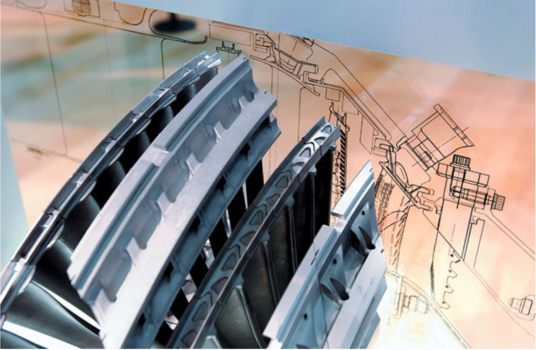Turbine preliminary design processes of the future
Due to multiple dependencies between individual components and disciplines, the preliminary design of turbomachinery is a complex process. By using multi-dimensional calculation methods, automated calculations and linked calculation processes, tools are programmed that can achieve a preliminary design with a desired level of detail. Another crucial factor in such a preliminary design is the efficient use of the tool by the engineer. Through an efficient preliminary design process with precise predictions, time and costs during the whole design process can be saved.
As part of this project, a mechanical preliminary design process for axial high-pressure and low-pressure turbines is being developed, which considers the future challenges of turbines of gas turbines. For this purpose, methods of an existing preliminary design tool are reworked and extended. The methods model the mechanical aspects of the main components of a turbine. Blades, guide vanes, blade roots, discs, casings, sealings, bearings and shafts should be dimensioned, and their weight estimated. For this purpose, significant physical effects such as mechanical and manufacturing limits, service life, corrosion, creep, temperature loads during operation, centrifugal forces, rupture of the disc and containment are considered. Also, correlations derived from data from existing engines are also used to obtain a quick but precise initial estimate of the dimensions or weight. A special focus should be on the secondary air system and its heat exchange with the other components and their resulting temperature change. However, not only the preliminary design itself, but also the process should be a main part of this work. The design should be optimized regarding engineering-ergonomic aspects. A suitable combination of automation, support for the user and user activity must be selected for the most efficient application. A concept for assistance, error messages, graphical and other interfaces between the program and the engineer will be developed.
[1] Bräunling, W. J. (2015). Flugzeugtriebwerke: Grundlagen, Aero-Thermodynamik, ideale und reale Kreisprozesse, Thermische Turbomaschinen, Komponenten, Emissionen und Systeme. Springer-Verlag.

